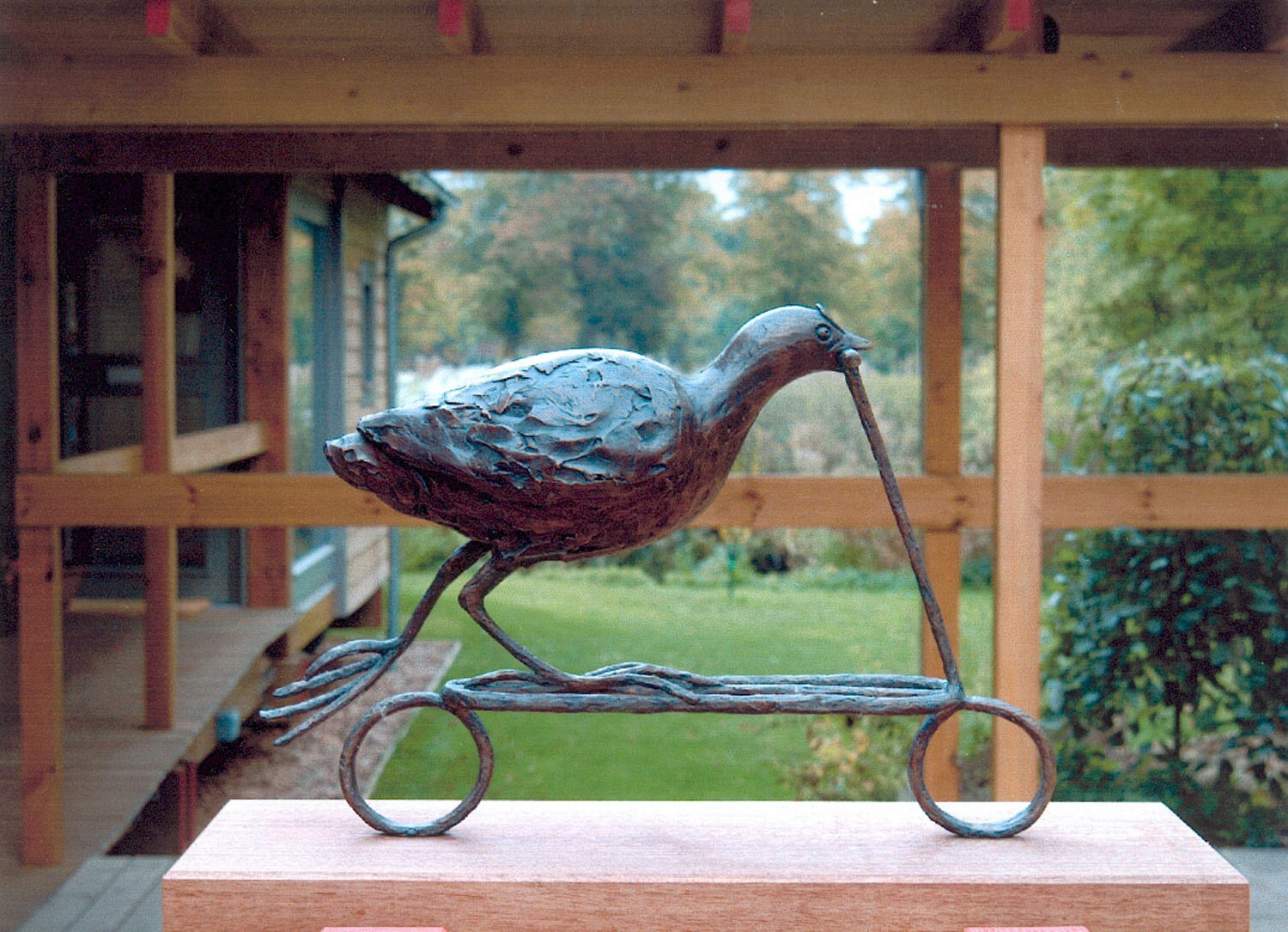What’s up with Bronze?
Scooting Coot. Bronze. 60cm x 40cm. Private commission.
Bronze
Traditionally, artists who model in soft materials have cast into bronze. This started in the Bronze Age itself, when the new technology revolutionised society. Throughout the centuries there weren’t many other options for casting materials until the advent of plaster, (sometimes known as “plaster of Paris,”) which was a much cheaper option, but vulnerable to breaking.
For a contemporary sculptor bronze presents some further dilemmas; one being around its finance, and the other is to do with its associations.
Finance
Bronze is very expensive to cast, which is more to do with the amount of skilled labour needed than the price of the raw material. Most sculptural bronze is cast by the “lost wax process,” which involves making two negatives, (moulds,) and three positives, (casts,) along the way, one of which is the wax that burns out and is “lost.” It requires a furnace and kiln, and is usually best done by a professional foundry. The cost is certainly justified relative to value of the skills of the castors, but it creates dilemmas for the sculptor:
What does it all cost?
A sculpture of a small horse, say 25cm, or 10 inches, long might cost a thousand pounds to mould, and another thousand pounds to cast. The industry standard is to double that for the artist and double it again for the gallery. This makes the sale price for that small piece £8000. There is a market for bronze sculpture and everybody needs to get paid, but it certainly makes for a very exclusive product, which limits its potential audience to a very narrow section of society. This is at odds with my creative ethos, which is much more about accessibility and inclusivity. (More about this in a later blog.)
How does this all work out for the Artist?
The financial model is problematic for the sculptor because it requires a high initial investment that is hard to find. In order to re-invest capitol to cast more sculpture, the sculptor has to sell everything that has been cast, and there is no room for surfeit. Understandably, customers and galleries often push for lower sale-prices, and although some galleries will drop to 30%, it is usually the artist who lowers their percentage, making it all increasingly unviable. Until reaching a certain point of bountiful highly-priced sales, most sculptors trying to sell bronze are making a loss or have other sources of income.
What to do about it?
Bronze also has a particular aesthetic. As beautiful as it is, it speaks to a certain established understanding about what figurative sculpture is, and I wanted to do things differently than this. I wanted to create a way of presenting my sculpture in line with my values around making and the inclusivity of experience. This led me to research and develop my own novel production methodology using eco-resin, which I will elaborate on in my next blog. Join me here in a fortnight’s time as I address the next question.
Nature-Spirit Rider XI. Eco-resin. 19 x 17 x 7cm. Edition of 24.

